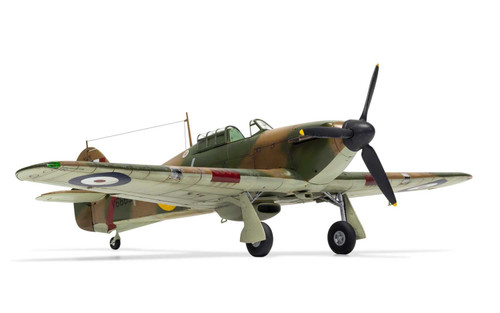Product Description
Airfix A05006 Fairey Swordfish Mk1 Floatplane 1:72 Scale Model Kit
The Fairey Swordfish was a torpedo bomber built by the Fairey Aviation Company and used by the Fleet Air Arm of the Royal Navy during the Second World War. Affectionately known as the “Stringbag” by its crews, it was outdated by 1939, but achieved some spectacular successes during the war, notably the sinking of one and damaging two battleships of the Regia Marina (the Italian Navy) in the Battle of Taranto and the famous crippling of the Bismarck. It was operated primarily as a fleet attack aircraft; however, during its later years, it was also used as an anti-submarine and training craft. Designed in the 1930s, the Swordfish outlived several types intended to replace it, and remained in front line service until VE Day.
The Swordfish was based on a Fairey Private Venture (PV) design; a proposed solution to the Air Ministry requirements for a spotter-reconnaissance plane, spotter referring to observing the fall of a warship’s gunfire. A subsequent Air Ministry Specification S.15/33, added the torpedo bomber role. The “Torpedo-Spotter-Reconnaissance” prototype TSR II (the PV was the TSR I) first flew on 17 April 1934. It was a large biplane with a metal frame covered in fabric, and utilized folding wings as a space-saving feature for aircraft carrier use. An order was placed in 1935 and the aircraft entered service in 1936 with the Fleet Air Arm (then part of the RAF), replacing the Seal in the torpedo bomber role.
By 1939, the Fleet Air Arm (now under Royal Navy control) had 13 squadrons equipped with the Swordfish Mark I. There were also three flights of Swordfish equipped with floats, for use off aircraft catapult-equipped warships. One – from HMS Warspite — spotted fall of shot (i.e., radioed gunnery corrections back to the ship) during the Second Battle of Narvik in 1940 and subsequently sank the U-boat U-64. The Swordfish pioneered the use of Air to Surface Vessel radar (ASV), by carrier borne aircraft to locate surface ship targets at night and/or through clouds.
Swordfish flew from merchant aircraft carriers (“MAC ships”), 20 civilian cargo or tanker ships modified to carry three or four aircraft each, on anti-submarine duties with convoys. Three of these ships were Dutch manned, flying Swordfish from 860 (Dutch) Naval Air Squadron. The rest were manned by pilots and aircrew from 836 Naval Air Squadron, at one time the largest squadron with 91 aircraft.
Almost 2,400 had been built, 692 by Fairey and 1,699 in Sherburn by the Blackburn Aircraft Company, which were sometimes dubbed the “Blackfish”. The most numerous version was the Mark II, of which 1,080 were made.














